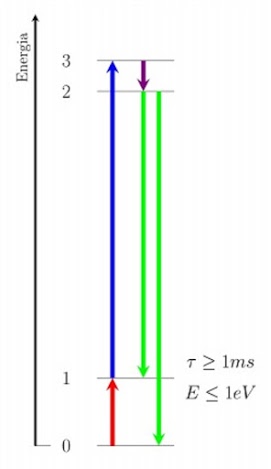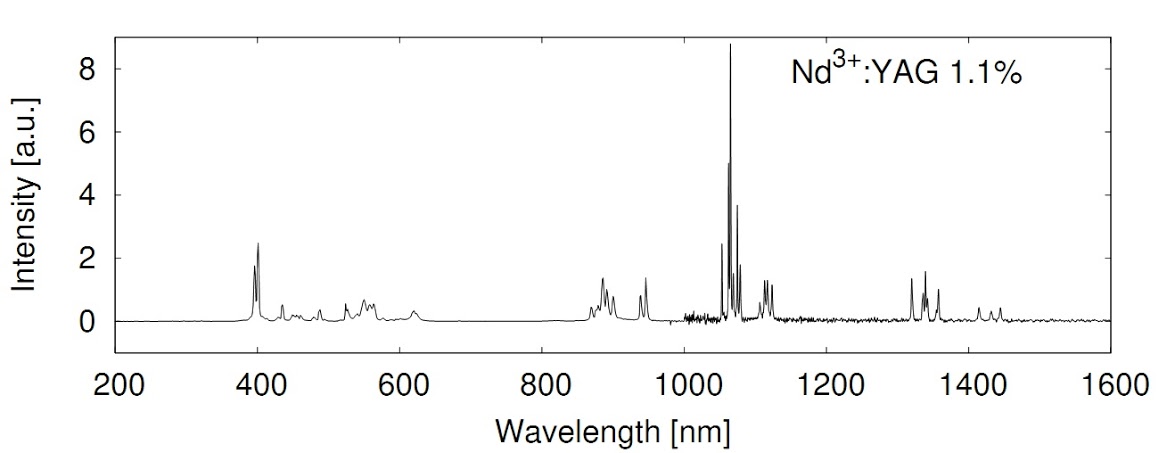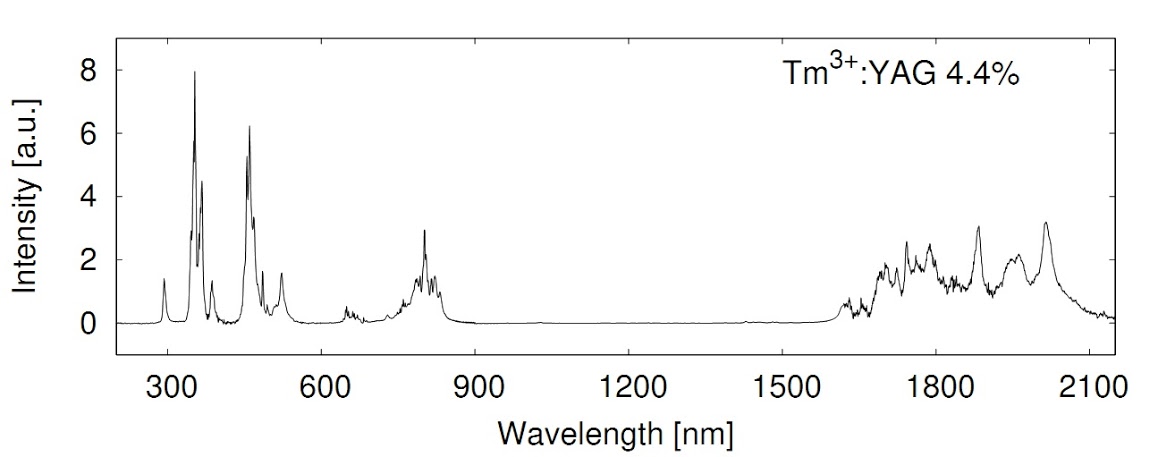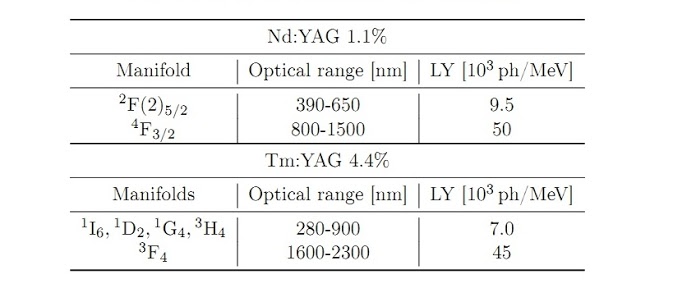IR Quantum Counter
The Axioma project is focused on the realization of new particle detectors characterized by low energy threshold. The detection process is mainly based on the Infrared Quantum Counter concept (IRQC) applied to rare-earth (RE) doped crystals, as proposed by the Nobel prize Bloembergen in 1959 [1] .
An energetic particle excites the RE ions from the ground state to the low-lying (< 1 eV), metastable (lifetime ≥ 1 ms) state 1 (Fig.1). Then, a tuned pump laser promotes the excited ions to the higher lever 3 (upconversion), that quickly and non radiatevely relax to the close state 2. The visible luminescence emitted by the transitions 2→1 and 2→0 provide the particle passage signal (Fig.1). We have already demonstrated the feasibility of this approach by exploiting an Er:YAG single crystal [2].
The advantage of the use of the laser consists of the conversion of the infrared photon, that would have been emitted by the transition 1→0, into one or more visible photons that can be detected with higher efficiency and with higher signal to noise ratio. In fact, the ions that return into the state 1 from 2 can be upconverted again accomplishing thus a loop process.
One of the most important requirements for this approach is that the energy deposition by means of an energetic particle in the crystal leads to an efficient excitation of ions to the lowest metastable manifold. Owing to the scant number of studies on these subjects that can be found in literature, we have estimated this excitation efficiency by studying the infrared emission of these low energy manifolds.

Figure 1 Energy level scheme of the detection process.
The first two investigated crystals are two single crystals (Nd:YAG 1.1% and Tm:YAG 4.4%) widely used for lasers. They have been excited by electron impact and by X-ray delivered by a homemade electron gun (up to 70 keV, 2 mA) and their luminescence from 200 nm to 5 μm has been analysed both quantitatively - using different photodiodes (Si, InGaAs, InAs, InSb), and qualitatively - by recording the emission spectrum with spectrometers (based on Si or InGaAs array) and FTIR interferometer (Fig. 2).


Figure 2 Cathodoluminescence of Nd:YAG and Tm:YAG.
The light yield (LY) of the two crystals has been estimated by comparing their radioluminescence with that of a calibrated Pr:LuYAG sample [3].
This calibration and the emission spectum along with the identification of the transition lead us to conclude that the low energy, long-lived state for both crystals (4F3/2 and 3F4) is efficiently populated (Table 1) with a number of ions/MeV as high as ≈ 5.104.
We plan to carry out a systematic investigation on several combinations of matrices, dopants, concentrations, even at different temperatures in order to achieve the highest infrared light yield.

Table 1 Ligth yield for Nd:YAG and Tm:YAG crystals.
References:
- N. Bloembergen, Phys. Rev. Lett. 2 (3) (1959) 84
- A. F. Borghesani, C. Braggio, G. Carugno, F. Chiossi, A. Di Lieto, M. Guarise, G. Ruoso, M. Tonelli, Appl. Phys. Lett. 107 (2015) 193501. doi:10.1063/1.4935151.
- F. Chiossi, K. Brylew, A. F. Borghesani, C. Braggio, G. Carugno, W. Drozdowski, M. Guarise, NIM AAccepted for publication. doi:http://dx.doi.org/10.1016/j.nima.2017.01.063.